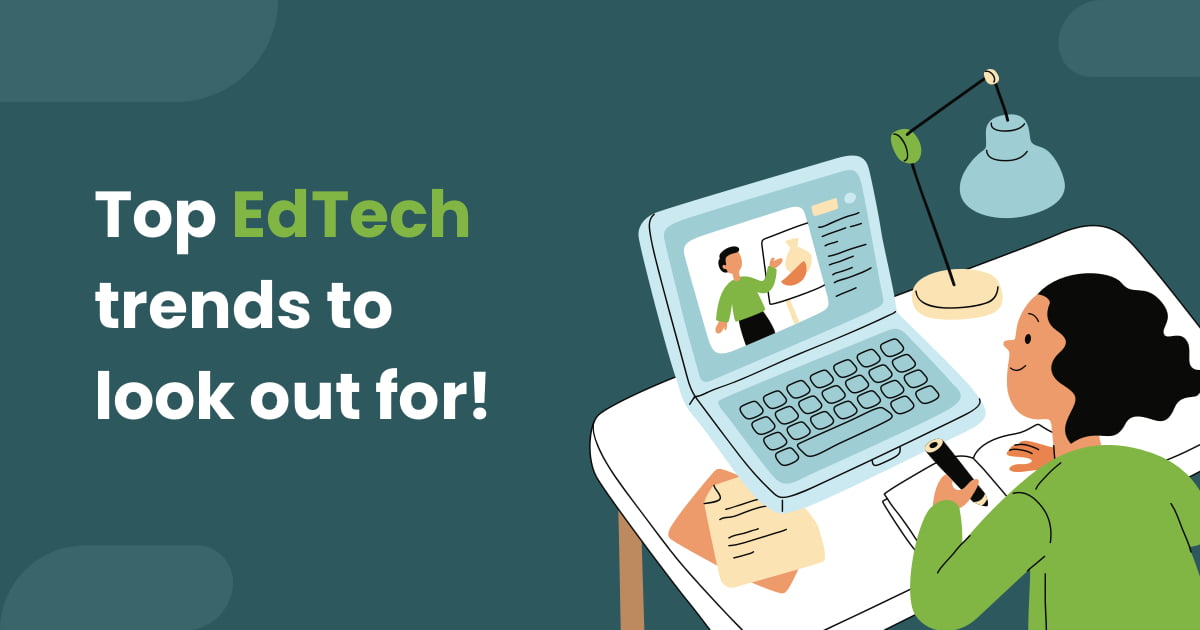
All through the previous many years, innovation has undergone lots of changes. These changes have made it much more flexible and materialistic in an assortment of areas. Also, probably the greatest changes have happened in the field of Education innovation specifically. Going from blackboards to iPads in each room, humans have made gigantic changes in the field of education. Also, there is so much more that is on the way.
EdTech after the pandemic has taken leaps and cutoff points to introduce significantly more instruments. Instruments that can simplify learning and assist with serving the objectives of education better. Thus, we as of now have an education system that is significantly more available, versatile, and intuitive than at any other time.
The thought for the mind is what else the EdTech sector growth is holding for us!!
Following the COVID-19 pandemic, schools and colleges are evolving. They are taking on new mechanical instruments to serve their students through remote learning plans. Considering these changes, the following are five emerging trends in EdTech that will probably stay through 2022
1. eLearning Platforms
As a result of the quick extension of COVID-19 and school closures, online learning turned into the main 2021 instructive innovation pattern for the time being. Accordingly, there is a growing requirement for online informative platforms. eLearning refers to instruction or education that is given on the web. It might be slide-based online activities or an internet-based course that helps an organization in preparing workers in fundamental abilities.
A pattern we are expecting in 2022 is the rise of cutting-edge e-learning stages. Obviously, online training is neither new nor uncommon nowadays. In any case, the worldwide lockdown constrained students to gain from home. There is an additional push for the improvement of e-learning stages. The push goes a long way past a standard bundle of video addresses.
In 2022, we hope to see more schools carry out stages for web finding. At last, this should give more advantages to online students. Furthermore, it is additionally expected to give better learning results through more complex yet captivating encounters.
2. Artificial Intelligence - A helping Hand
More artificial intelligence (AI) programs are springing up in ventures, like that of business and medical services. But on the other hand, schools are utilizing AI through mechanized evaluating frameworks and even AI educating collaborators.
Artificial Intelligence-driven programs are on a drift now. These tools aim towards making teaching more successful and consistent. As well as making better learning encounters for students. Likewise, it additionally furnishes students with a more available means to acquire data and have their inquiries addressed.
3. VR/AR for Immersive Experience
Although Virtual Reality or Augmented Reality can't compose your assignment without your interest, this strategy might make it a lot easier. The fundamental advantage is active assistance. Contrasted with passive ways of instruction, VR or AR tools may support your inspiration and open new freedoms to plan for any tasks.
For example, you are a science student and need to remember the structures of isomers. You can do it with printed duplicates of the structures however seeing it in the 3D organization makes learning a lot simpler. It will permit you to remember all bonds and notice explicit details. This is all possible gratitude to augmented reality.
4. Gamification for Better Learning
Another 2022 pattern that has effectively been there in EdTech after covid is gamified learning. This term refers to more intelligent, game-like learning encounters. To support students' commitment educators are relying upon gamified learning and, individually, their scholastic exhibition.
This pattern really goes inseparably with VR and AR advances. Together, these two patterns will empower us to take schooling to an unheard-of level. This will allow kids to learn by playing advanced games that submerge them into new, virtual universes.
For this type of instruction, instructors fuse an array of gaming applications in their examples, including Kahoot!, Pictionary, and even Minecraft: Education Edition. This furnishes students with a better experience.
5. Plan of Action for Exams
Exams have a similar significance as learning. Traditional assessment implies a student needs a piece of paper and a pen to answer all the questions asked by the educator. But these days tests aren't very similar.
The education sector continues to foster explicit stages to direct tests. Utilizing Artificial Intelligence (AI) and other modern advances, we can streamline, set up, and mechanize this connection. Likewise, both students and instructors will contribute less energy and avoid pressure during tests.
Engineers should make applications for EdTech future trends that might assist with assessment. Like separating students' introductions during the test, contrasting creating answers and model answers, etc. The opportunities for excellent internet-based evaluation techniques are constant.
Finally
Learning examination, VR and AR, AI-driven learning, gamification, and e-learning stages - this load of significant patterns truly proves that we are venturing into one of the most thrilling periods in schooling that is the future of EdTech.
Also, given everyone's benefit, we accept that these EdTech industry trends may be staying here for quite a long time ahead.









